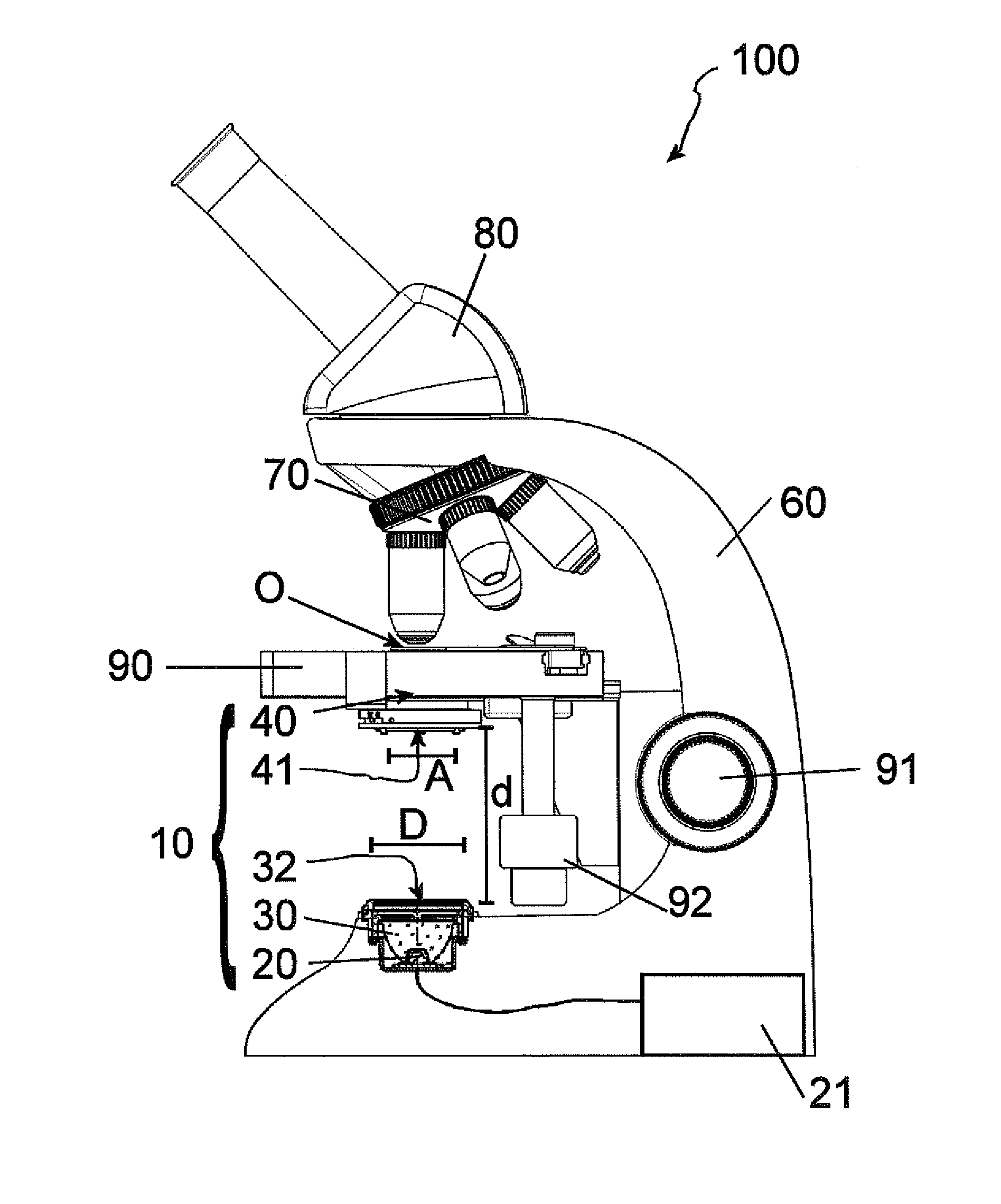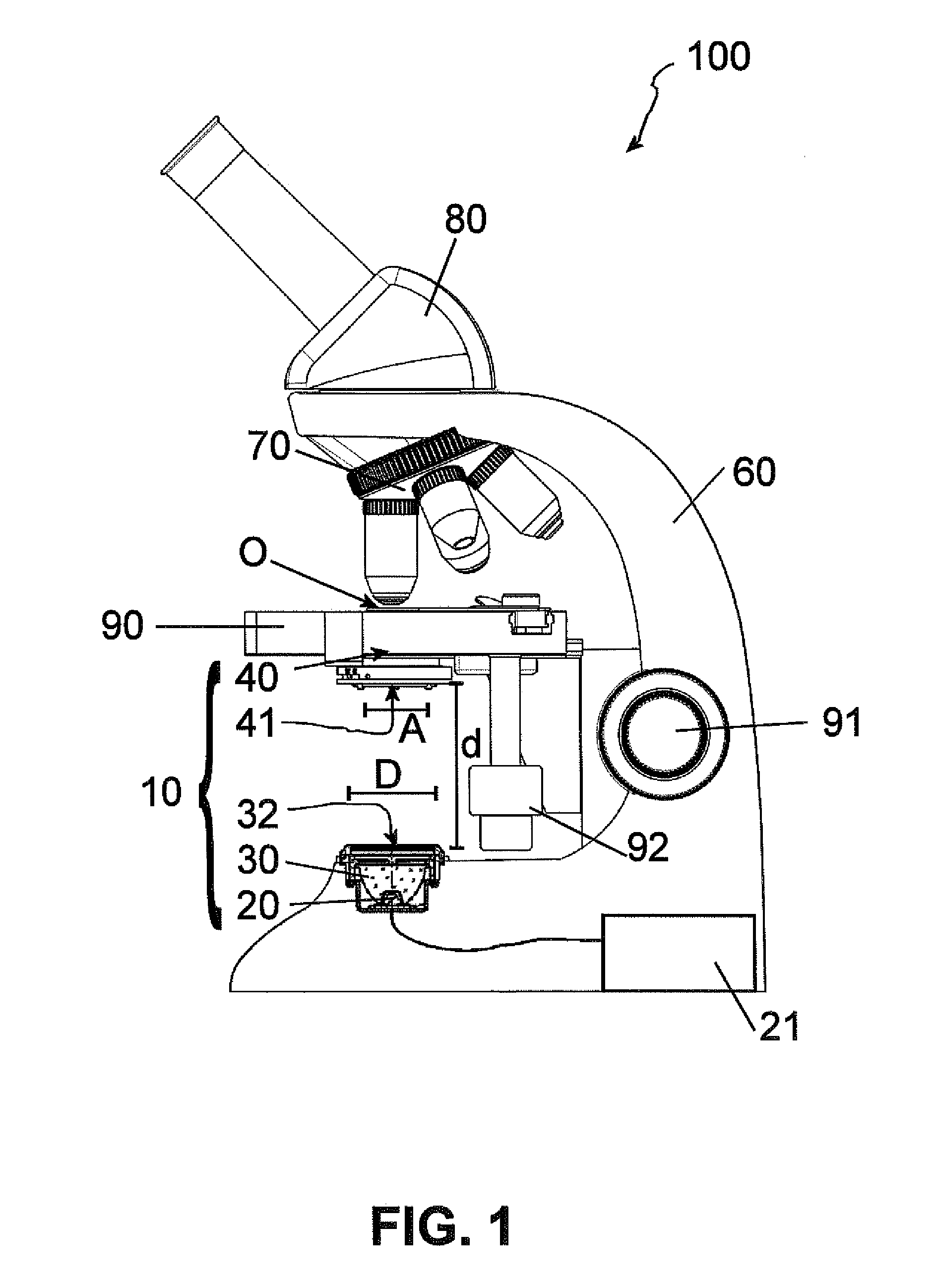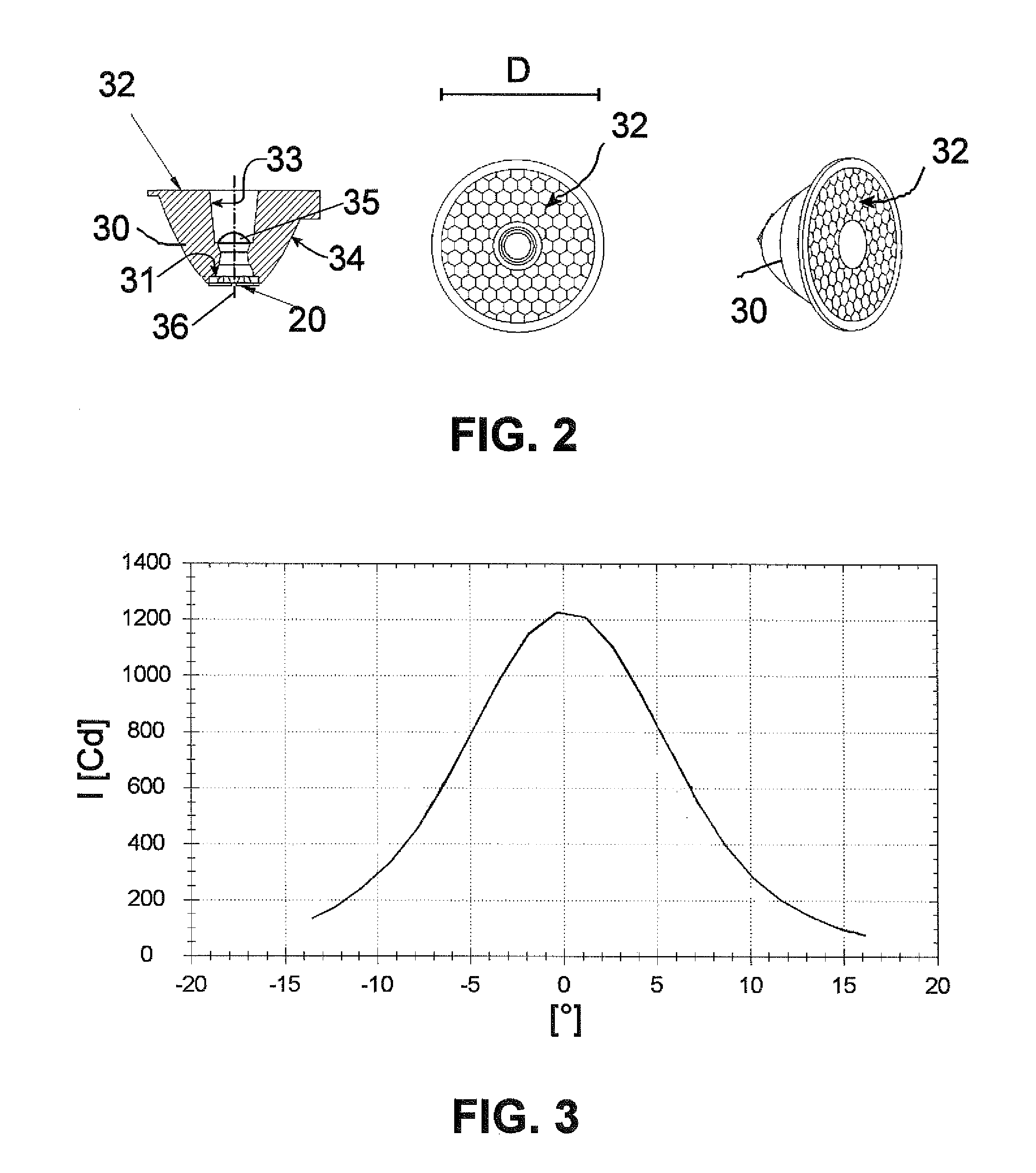Microscope having a transmitted illumination device for critical illumination
a technology of transmitted illumination and microscope, which is applied in the field of microscopes having transmitted illumination devices for critical illumination to achieve the effects of reducing brightness, reducing scattering effects at edges, and sufficient illumination intensity
- Summary
- Abstract
- Description
- Claims
- Application Information
AI Technical Summary
Benefits of technology
Problems solved by technology
Method used
Image
Examples
embodiment 500
[0056]Embodiment 500 according to FIG. 5 is star-shaped, a dimension D2 (smallest longitudinal extent through a geometrical center point) of a central (in particular, convex) region in the center likewise being adapted to a predetermined aperture dimension (preferably corresponding to a numerical aperture of 0.35). Alongside the central region in the center, predetermined region 501 additionally comprises tapering structures, in particular in order to avoid an abrupt light decrease during closing of the aperture diaphragm and scattering at the transition from the diffusing region to the clear region.
[0057]FIG. 6 depicts a further preferred embodiment of a light directing unit 30′, in a longitudinal section view sketching the internal structure (center), with light paths (left), and with light paths as well as a structured optical component attached in front (right), schematically in each case.
[0058]Light emitted from LED arrangement 20 constituting a light source is coupled into lig...
PUM
 Login to View More
Login to View More Abstract
Description
Claims
Application Information
 Login to View More
Login to View More - R&D
- Intellectual Property
- Life Sciences
- Materials
- Tech Scout
- Unparalleled Data Quality
- Higher Quality Content
- 60% Fewer Hallucinations
Browse by: Latest US Patents, China's latest patents, Technical Efficacy Thesaurus, Application Domain, Technology Topic, Popular Technical Reports.
© 2025 PatSnap. All rights reserved.Legal|Privacy policy|Modern Slavery Act Transparency Statement|Sitemap|About US| Contact US: help@patsnap.com



